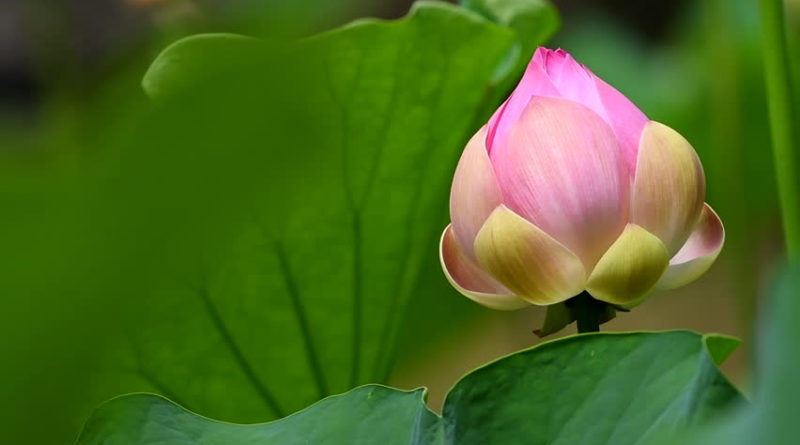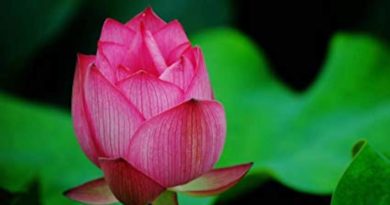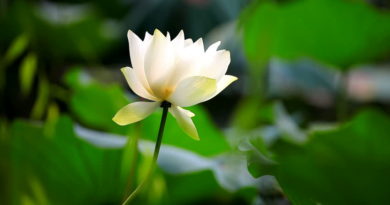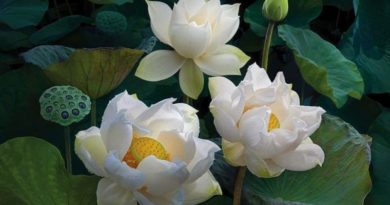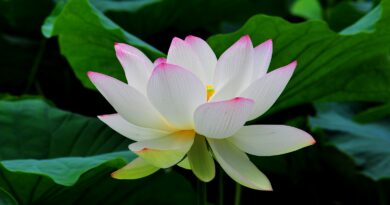QUESTIONS ON KAMMA
MAIN CONTENT
- On Kamma
- Every Choice Of Ours Has A Tremendous Potential For The Future
- Kamma is like a seed
- Types of Kamma based on the time of fruition
- Types of Kamma based on Ethical Grounds Wholesome and Unwholesome Kamma
- Why Is One Intelligent And Another Dull-Minded? Why Is One Born Ugly And Another Beautiful?
- Survey of Buddhist Cosmology
- We Are Not Hopeless Prisoners Of Our Past
- Going beyond kamma – the ultimate aim of the path
QUESTIONS ON KAMMA
On Kamma
There is a tremendous variety among the living beings existing in the world. People and animals are of different sorts. What is it that causes us to take rebirth in a particular form? Does it happen through coincidence, through accident, by chance without any reason or is there some principle behind it? What is it that determines the form of rebirth we take?
Buddha answers these questions, with the Pali term “kamma”. Kamma is the factor which determines the specific form of rebirth, what kind of a person we are, at the outset of our life, and it is kamma again that determines a good number of the experiences that we undergo in the course of our life.
The word “kamma” means literally action, deed or doing. But in Buddhism it means specifically volitional action.
The Buddha says:
“Monks it is volition that I call kamma. For having willed, one then acts by body, speech or mind”. What really lies behind all action, the essence of all action, is volition, the power of the will. It is this volition expressing itself as action of body, speech and mind that the Buddha calls kamma.
This means that unintentional action is not kamma. If we accidently step on some ants while walking down the street, that is not the kamma of taking life, for there was no intention to kill. If we speak some statement believing it to be true and it turns out to be false, this is not the kamma of lying, for there is no intention of deceiving.
Kamma manifests itself in three ways, through three “doors” of action. These are body, speech and mind. When we act physically the body serves as the instrument for volition. This is bodily kamma. When we speak, expressing our thoughts and intentions, that is verbal kamma, which can be performed either directly through speech or else indirectly through writing or other means of communications. When we think, plan, desire inwardly, without any outer action, that is mental kamma. What lies behind all these forms of actions is the mind and the chief mental factor which causes the action is the volition.
Every Choice Of Ours Has A Tremendous Potential For The Future
According to the Buddha, our willed actions produce effects. They eventually return to ourselves. One effect is the immediately visible psychological effect. The other is the effect of moral retribution.
Firstly let us deal with the psychological effect of kamma. When a willed action is performed it leaves a track in the mind, an imprint which can mark the beginning of a new mental tendency. It has a tendency to repeat itself, to reproduce itself, somewhat like a protozon, like an amoeba. As these actions multiply, they form our character. Our personality is nothing but a sum of all our willed actions, a cross-section of all our accumulated kamma. So by yielding first in simple ways to the unwholesome impulses of the mind, we build up little by little a greedy character, a hostile character, an aggressive character or a deluded character. On the other hand, by resisting these unwholesome desires we replace them with their opposites, the wholesome qualities. Then we develop a generous character, a loving and a compassionate personality, or we can become wise and enlightened beings. As we change our habits gradually, we change our character, and as we change our character we change our total being, our whole world. That is why the Buddha emphasizes, so strongly the need to be mindful of every action, of every choice. For every choice of ours has a tremendous potential for the future.
Now let us examine the effects of moral retribution. What is most important in Kamma is its tendency to ripen in the future and produce results in accordance with the universal moral law.
Whenever we perform an action with intention, such action deposits a “seed” in the mind, a seed with a potency to bring about effects in the future. These effects correspond to the nature of the original action. They follow from the inherent ethical tone of the action. Our unwholesome kamma comes back to us and lead to our harm and suffering. Our wholesome kamma eventually returns to us and leads to our happiness and well being.
Seen from this angle, from the standpoint of karmic law, the universe appears to maintain a certain moral equilibrium, a balance between all the morally significant deeds and the objective situations of those who perform them. So the law of kamma is a moral application of the general principle that for every action there is an equal and an opposite reaction. However, the working of kamma is not mechanical. Kamma is willed action and the kamma is something alive and organic. Therefore kamma allows much room for variation, for the play of living forces.
Kamma is like a seed
First of all, not all Kamma has to ripen as a matter of necessity. Although it has the tendency to ripen, it does not ripen inevitably. Kamma is like a seed. Seeds ripen only if they meet the right conditions. But if they do not meet the right conditions they remain as seeds; if they are destroyed they can never ripen at all. Similarly, it can be said of kamma that kamma pushes for an opportunity to mature. It has a tendency to mature. If kamma finds the opportunity then it will bring its results. If it does not meet the right conditions it won’t ripen. One kamma can even be destroyed by another kamma. So it is important to understand that our present way of life, our attitudes and conduct, can influence the way our past kammas mature. Some past kammas are so powerful that they have to come to fruition. We cannot escape them no matter what we do. But the greatest number of our past kammas are conditioned by the way we live now. If we live heedlessly, unwisely, we will give our past bad kammas the opportunity to ripen and this will either hinder the good kammas from producing their effects or else cancel out their good effects.
On the other hand, if we live wisely now, we will give our good kammas the opportunity to mature and bar out our bad kammas or weaken them, destroy them or prevent them from coming to fruition.
Types of Kamma based on the time of fruition
Kamma can produce results at different times, even in different lives. The Buddha says that there are three types of kammas distinguished by way of time of ripening. There are kammas which ripen in this lifetime, kammas which ripen in the next lifetime and kammas that ripen some lifetime after the next. The last kind of kamma is the strongest. The first two kinds become defunct if they don’t find an opening. They will never ripen if they don’t get the opportunity to ripen either in the present life or in the next life. But the third type remains with us as long as we continue in Samsara. It can bring its results even after hundreds and thousands of aeons in the future. This time lag help us to understand what might seem to be a discrepency in the working of kamma.
Often we see good people who meet with much suffering and bad people who meet with great success and good fortune. This is due to the time lag. The good man is reaping the results of a bad kamma of the past. But he will eventually gain the pleasant results from the good kammas he is performing now. In the same way, the bad man is enjoying the results of his good kammas of the past. But in the future he will meet with the fruition of his bad kammas and must undergo suffering.
Types of Kamma based on Ethical Grounds
Wholesome and Unwholesome Kamma
The Buddha divides kamma ethically right down the middle into two different classes, wholesome kamma (“kusala kamma”) and unwholesome kamma (“akusala kamma”). Unwholesome kamma is action which is spiritually harmful and morally blameworthy. Wholesome kamma is action which is spiritually beneficial and morally praiseworthy.
Intention
There are two basic criteria for distinguishing wholesome and unwholesome kammas. One is the intention behind the action. If an action is intended to bring harm to oneself, harm to others or harm to both oneself and others, that is unwholesome kamma. Kamma which conduces to the good of oneself, to the good of others or to the good of both is wholesome kamma.
Roots
The other criterion is the roots of action. All action arises from certain mental factors called roots. These are the causal factors underlying action or the sources of action. All unwholesome actions come from three unwholesome roots, greed, aversion and delusion. Greed is selfish desire aimed at personal gratification, expressed as grasping, craving and attachment. Aversion is ill will, hatred, resentment, anger and a negative evaluation of the object. Delusion is ignorance, mental unclarity and confusion.
We also find the roots in the wholesome side: non-greed, non-aversion and non-delusion. Non-greed becomes manifest as detachment and generosity. Non-aversion is expressed positively as good will, friendliness and loving kindness. Non-delusion is manifested as wisdom, understanding and mental clarity.
Due to these roots we have to be very careful when we judge actions of our own and of others. Often there can be a sharp difference between the outer action and the state of mind from which the action springs. We might be doing a lot of good work for others outwardly, but the underlying motive behind our good work might be a desire to gain fame and recognition, a form of the unwholesome root greed and craving. Someone else might be sitting quietly meditating, seemingly aloof, but inwardly he might be developing a mind of loving kindness and compassion. He might be criticised for seeking only his own good, but he might be doing more to benefit the world than the active do-gooder who is driven by desire for name and fame.
The working of kamma is so complex and so subtle that it is almost impossible to make definite predictions. All that we can know with certainty are the tendencies, but that is enough to guide our actions.
Unwholesome Actions
There are ten main forms of unwholesome actions:
Bodily
1. Taking life
2. Taking what does not belong to oneself
3. Engaging in sexual misconduct (adultery, seduction, etc)
4. Speaking falsehoodVerbal
5. Speaking slanderous speech
6. Speaking harshly
7. Engaging in idle chatter, in gossipMental
8. Covetousness,yearning for the possessions of others
9. Ill will (Actively desiring harm, suffering and destruction to come to others)
10. Wrong views (specially fixed wrong views which deny the efficacy of moral action.)
By abstaining from the above, one develops the opposite virtues, the ten courses of wholesome action.
Why Is One Intelligent And Another Dull-Minded?
Why Is One Born Ugly And Another Beautiful?
Kamma produces its results in different ways. There are two general ways in which it comes to fruition:
1. It produces the type of rebirth, the basic rebirth consciousness.
2. It produces various results within the course of an existence.
At the time of death, a particular dominant kamma may come to the fore of the mind and steer the stream of consciousness to the new existence. Once rebirth takes place, certain other kammas mature during the course of life bringing either favourable or unfavourable results.
The good and bad results that arise from kamma are not rewards or punishments. They are not imposed by any outside power. Actions produce their results naturally through the law of cause and effect working in the moral realm. This natural law is called “kamma niyama”, the order of kamma, which functions autonomously. The Buddha explains how kamma is the cause of differences in the fortunes of people.
(a) Some people die prematurely because in the past they have destoyed life. The karmic result of killing is to be shortlived. Others live long because they were kind and compassionate, they had respect and reverence for life.
(b) Some are sickly because they have injured and hurt other beings.
(c) Those who were often angry and harsh become ugly, those who were patient and cheerful become beautiful.
(d) Some are rich because they have been generous in the past, some are poor because they have been selfish.
(e) Some are influential because they have rejoiced in the good fortunes of others.
(f) Some are weak and powerless because they have been envious of the good fortunes of others.
(g) Some are intelligent because they have been reflective and studious in the past, because they always enquired and investigated matters. Some are dull and stupid because they have been lazy and negligent, because they never studied and did not think.
Survey of Buddhist Cosmology
The next topic to be discussed is the plane of existence where kamma produces rebirth. This requires a short survey of Buddhist Cosmology, the Buddhist picture of the universe.
Buddhism divides the whole of sentient existence into three basic realms:
1. The sense sphere realm
2. The realm of fine materiality
3. The immaterial or formless realm
1. Sense-sphere Realm
This is the lowest realm. There are six planes of existence under this category.
(a) The hells, states of intense torment and suffering.
(b) The sphere of the ‘pretas’, the afflicted spirits (sometimes called the hungry ghosts). These are beings with strong, tormenting desires, insatiable hunger and thirst; they are always on the look out for food and drink.
(c) The animal kingdom. The dominant characteristic of the animals is dullness of mind and strong brutal desire.
(d) Sphere of the asuras Titanic beings dominated by the desire for power, by ambition and competitiveness.
The hells, spheres of pretas, asuras and the animal kingdom are called the ‘plane of misery’. These are unfortunate and undesirable states of rebirth. In the sense sphere there are two fortunate planes of rebirth:
(e) The human world.
(f) The world of the devas (heavenly world).
Devas are beings inhabiting the heavenly worlds, enjoying long life, beauty, happiness and power. But the life in the heavens is also impermanent, subject to pass away, and therefore heaven is not the ultimate goal for those following Buddha’s path to liberation.
The Buddha points out that of all the planes of existence, the most fortunate for one seeking liberation is the human world, for it has a good balance between opposing factors of life. On the one hand, human life is not filled with unbearable suffering. It allows enough leisure, ease and comfort for us to reflect on the nature of existence so that we can develop our understanding. On the other hand, the human world is not so intensely pleasant and enjoyable that we become deceived by pleasures and enjoyment. The lifespan is not so long that it deceives us into thinking that our lives are eternal. It is short enough for us to become aware of the truth of impermanence.
2. Realm of Fine Materiality
This is a realm of subtle matter. These states of existence are much purer than even the heavens of the sense-sphere realm. There the mind becomes bright and luminous. The lifespan is incredibly long, lasting for many aeons. And the gross forms of matter are absent. These realms, however, are also impermanent. Life there eventually comes to an end and the person will be reborn elsewhere as determined by his kamma.
3. Immaterial or Formless Realm
These states of existence are entirely mental. The mind subsides without any material base, absorbed in pure peace, pure equanimity, for thousands of aeons. In these spheres too life finally comes to an end and the stream of consciousness takes rebirth elsewhere as determined by kamma.
Now the question might be raised whether a person with an education in science can really believe a cosmology like this, which seems to be ancient, outdated and superstitious. Hence I have to give a personal answer. To me the general form of this cosmology seems quite tenable. If we can see the logic behind the law of kamma, and then consider the different kinds of actions people are capable of performing, it becomes clear that there must be different planes of existence appropriate for the maturation of the different types of kamma.
In the case of such evil kamma as killing thousands of people cruelly and heartlessly, for such kamma to meet its fruits the person performing such kamma has to be born in a realm of intense suffering, the hells. On the other hand, if someone has performed very noble deeds such as giving up his limbs, his life or his wealth for the sake of others, if one has a loving and compassionate mind, there must also be a corresponding realm for such kamma to produce its due results. That is the heavenly realms. Also, when we understand the different meditative attainments, the jhanas and the formless attainments, and see how those higher levels of consciousness, are so vastly different from the usual familiar consciousness, it becomes clear that they correspond to other planes of existence. Thus the whole picture fits together quite logically.
Mind is The Architect Of The Whole Universe
The dominant reason for rebirth is always found in our own mind. If we look into our mind, we can see that the different planes of existence are already contained in the mind in seed form.
The dominant forces in our minds will be human states, states tied to the human world. This is the basic “tone” of our consciousness. But at times there will arise states of intense hatred which might find expression as violence or cruelty. At such moments we are constructing for ourselves a hell world. Psychologically we might be living in hell and karmically those states are the seeds of rebirth into hell.
At other times very noble thoughts will arise in us, making us feel divine or heavenly, thoughts such as supreme generosity, great kindness and compassion. With such thoughts, our world becomes very light and pure, almost like a heavenly world. These states of mind are, in fact, the seeds for rebirth in the heavenly worlds.
At times of blind desire, of brutishness, blind lust, or dull stupidity, we can see in ourselves the mind of an animal. These states are the seeds of animal existence.
We can sometimes see selfishness, possessiveness, intense clinging. At that time the mind becomes similar to the mind of a preta, an afflicted spirit, and we are planting the seed of rebirth in the preta world.
Again, there come up states of greed for power, jealousy and envy, competitiveness, the urge for power. At that time we have the mind of an asura and we lay the foundation for rebirth into the world of asuras.
So what lies behind all these planes of rebirth is the mind. Therefore the Buddha says that mind is the architect of the whole universe. We should not think of the rebirth process in terms of a human being appearing in different realms, moving from realm to realm. But rather these planes simply provide the field for the mind to work out the accumulated tendencies. The realms are only visible manifestations, the outer projections of the forces that work in the mind.
We Are Not Hopeless Prisoners Of Our Past
The twin teachings on kamma and rebirth have several important implications for understanding our own lives.
First they enable us to understand that we are fully responsible for what we are. We can’t blame our troubles on our environment, on our heredity, on fate or on our upbringing. All these factors have made us what we are, but the reason we have met these circumstances is because of our past kamma. This might seem to be at first a pessimistic doctrine. It seems to imply that we are the prisoners of our past kammas, that we have to submit to their effects. This is a distortion.
It is true that very often we have to reap the results of our past kamma. But the important point to understand is that kamma is volitional action, and volitional action always takes place in the present, only in the present. This means at present it is possible for us to change the entire direction of our life.
If we closely examine our lives we’ll see that our experience is of two types: first, experience that comes to us passively, which we receive independently of our choice; and second, experience which we create for ourselves through our choices and attitudes. The passive side of experience is largely the effect of past kamma.We generally have to face this and learn to accept it. But within those limitations there is a space, the tremendous space of the present moment, in which we can reconstruct our world with our own minds.
If we let ourselves be dominated by selfishness, hatred, ambition and dullness, then, even if we are wealthy and powerful, we’ll still be living in misery and suffering and keep planting seeds for rebirth in the world of suffering. On the other hand, even if we are poor and in sad circumstances, with much pain and misfortune, if we observe pure conduct, develop a mind of generosity, kindness and understanding, then we can transform our world, we can build a world of love and peace.
Going beyond kamma – the ultimate aim of the path
The ultimate aim of the path of the Buddha is not simply to achieve good results by performing good kamma. This is a mundane aim. The true aim of the path is to go entirely beyond the chain of kamma and results.
As long as we go on performing kamma and accumulating kamma, we remain subject to birth and death, and we will meet with suffering in its diverse forms. Whether one is living in a fortunate world or an unfortunate world is secondary. All states of existence are impermanent, without substance and unsatisfactory.
Kamma is generated due to clinging, clinging to good or bad actions. Clinging rests upon ignorance. By developing mindfulness and insight, by learning to see things as they really are, we can put an end to clinging and break free from kamma. Then we discover the freedom beyond kamma, the freedom of liberation.
The arahant, the liberated one, does not generate any more kamma. He continues to act and perform volitional actions, but without clinging. Hence his actions no longer constitute kamma. They don’t leave any imprints upon the mind. They don’t have the potency of ripening in the future to bring about rebirth. The activities of the arahants are called “Kriyas”, not kammas. They are simple actions. They leave no trace on the mental continuum, just like the flight of birds across the sky.

